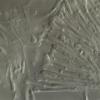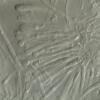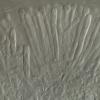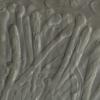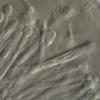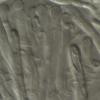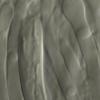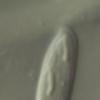
15-12-2025 07:09
 Danny Newman
Danny Newman
indet. Rutstroemiaceae sp. on unk. fallen leavesMc

15-12-2025 21:11
 Hardware Tony
Hardware Tony
Small clavate hairs, negative croziers and IKI bb

15-12-2025 15:54
 Johan Boonefaes
Johan Boonefaes
Unknown anamorph found on the ground in coastal sa

15-12-2025 15:48
 Danny Newman
Danny Newman
Melanospora cf. lagenaria on old, rotting, fallen

15-12-2025 07:05
 Danny Newman
Danny Newman
Pseudosclerococcum golindoi (det: Zotto)near Cosb

15-12-2025 11:49
 Danny Newman
Danny Newman
ITS sequences from the following two collections B

15-12-2025 12:34
 Danny Newman
Danny Newman
indet. Rhytismataceae on oak leafnear Purchase Roa

09-12-2025 12:06
 Andgelo Mombert
Andgelo Mombert
Bonjour,Je recherche l'article concernant Hypobryo
Orbilia on wet wood
Chris Yeates,
06-11-2013 19:28
 Bonsoir tous
Bonsoir tousthis pale lilac-coloured Orbilia was collected in wet woodland, with Sphagnum close by; the wood is probably that of Betula pubescens, but is possibly Corylus. The spores are mostly straight, ellipsoid and with straight to sigmoid internal spore bodies extending to almost half the spore length. I was wondering about Orbilia vinosa, but the spores are too small at 8.2-10.5 x 1.6-2.3µm. Suggestions welcomed . . . .
Cordialement
Chris
Hans-Otto Baral,
06-11-2013 21:01

Re : Orbilia on wet wood
Hi Chris
this is a good chance to try to obtain the anamorph. But it is often without luck: we tried it by placing a wood fragment with apos in an empty petri dish and flooding it with water. Within some days conidia may form on the wood.
This looks quite clearly for Orbilia rosea, the new name for the species associated with Anguillospora (a new combination based on Anguillospora rosea).
The holotype of the anamorph is from here:
Yorkshire, 17 km NNE of Bradford, ~4 km NNE of Otley, Lindley Wood Reservoir, 100 m, branch of indet. woody plant, 19.V.1978, J. Webster
The spores are certainly not over 2 µm wide: after the l:w ratio they are 8-10.5 x 1.3-1.6 µm, if the length is correct.
Betula and Corylus are easily distinguished with a radial section that hits the vacsular bundles: bot have scalariform perforation plates, with very different number of bars (much below 10 = Corylus, 10-20 = Betula.
Was it a running or standing water? geology acid or not?
Zotto
this is a good chance to try to obtain the anamorph. But it is often without luck: we tried it by placing a wood fragment with apos in an empty petri dish and flooding it with water. Within some days conidia may form on the wood.
This looks quite clearly for Orbilia rosea, the new name for the species associated with Anguillospora (a new combination based on Anguillospora rosea).
The holotype of the anamorph is from here:
Yorkshire, 17 km NNE of Bradford, ~4 km NNE of Otley, Lindley Wood Reservoir, 100 m, branch of indet. woody plant, 19.V.1978, J. Webster
The spores are certainly not over 2 µm wide: after the l:w ratio they are 8-10.5 x 1.3-1.6 µm, if the length is correct.
Betula and Corylus are easily distinguished with a radial section that hits the vacsular bundles: bot have scalariform perforation plates, with very different number of bars (much below 10 = Corylus, 10-20 = Betula.
Was it a running or standing water? geology acid or not?
Zotto
Chris Yeates,
06-11-2013 21:37

Re : Orbilia on wet wood
Many thanks for the swift reply Zotto
I did wonder about the anomalous width reading - I may have mis-read an artefact. This is very interesting: I have long had an interest in Ingoldian (and more recently aero-aquatic fungi). Indeed on the same day I collected a stream-foam sample (which I have not yet started to examine) quite close to this find - in the past samples have proved quite rich from this site (e.g. http://www.ascofrance.com/search_recolte/3010) which has several streams with fast flowing water.
I shall certainly do what you suggest. The fungus was collected towards the underside of a decorticated branch, lying in water in a swamp, which is probably very slow moving. I doubt the sample I shaved off will contain vascular bundles. The site for the holotype which you mention is little more than 30km from this collection site and both lie on Carboniferous Millstone Grit (i.e. quite strongly acidic).
Has Orbilia rosea been published yet or is it 'ined'? The placing of at least this Anguillospora in the Orbiliales has implications for the traditional placing of the genus in Pleosporales; the 'genus' is presumably polyphyletic?
best wishes
Chris
I did wonder about the anomalous width reading - I may have mis-read an artefact. This is very interesting: I have long had an interest in Ingoldian (and more recently aero-aquatic fungi). Indeed on the same day I collected a stream-foam sample (which I have not yet started to examine) quite close to this find - in the past samples have proved quite rich from this site (e.g. http://www.ascofrance.com/search_recolte/3010) which has several streams with fast flowing water.
I shall certainly do what you suggest. The fungus was collected towards the underside of a decorticated branch, lying in water in a swamp, which is probably very slow moving. I doubt the sample I shaved off will contain vascular bundles. The site for the holotype which you mention is little more than 30km from this collection site and both lie on Carboniferous Millstone Grit (i.e. quite strongly acidic).
Has Orbilia rosea been published yet or is it 'ined'? The placing of at least this Anguillospora in the Orbiliales has implications for the traditional placing of the genus in Pleosporales; the 'genus' is presumably polyphyletic?
best wishes
Chris
Hans-Otto Baral,
06-11-2013 21:55

Re : Orbilia on wet wood
Yes, Anguillospora in its type meaning is not orbiliaceous. But we use it as a form genus to describe the conidial type.
Thanks for the ecology. And yes, the combination is unpublished.
Even when only 2 mm thick a chip of wood contains the pores.
Zotto
Thanks for the ecology. And yes, the combination is unpublished.
Even when only 2 mm thick a chip of wood contains the pores.
Zotto

